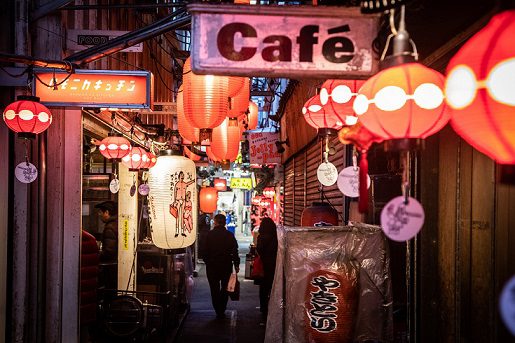 Slow, rural and eco are not words usually associated with a big metropolis like Tokyo, yet these are some of the key topics covered in the Tokyo Responsible Travel – Trade Manual released this year. The manual is the result of a joint research project by Tokyo Visitors & Convention Bureau (TCVB), Recruit Co., Ltd and Jalan Research Center which examined sustainable tourism from a marketing perspective. With this manual TCVB’s aim is to help visitors find and enjoy authentic, special places and experiences away from the main tourist routes that will benefit from tourism. Immersive authentic and off-the-beaten track this manual invites travellers to “turn left, when everyone else is turning right to get under the skin of Tokyo”. Here we share some of the manual’s tips on where to enjoy “Slow Tokyo”.
Slow, rural and eco are not words usually associated with a big metropolis like Tokyo, yet these are some of the key topics covered in the Tokyo Responsible Travel – Trade Manual released this year. The manual is the result of a joint research project by Tokyo Visitors & Convention Bureau (TCVB), Recruit Co., Ltd and Jalan Research Center which examined sustainable tourism from a marketing perspective. With this manual TCVB’s aim is to help visitors find and enjoy authentic, special places and experiences away from the main tourist routes that will benefit from tourism. Immersive authentic and off-the-beaten track this manual invites travellers to “turn left, when everyone else is turning right to get under the skin of Tokyo”. Here we share some of the manual’s tips on where to enjoy “Slow Tokyo”.
Slow Tokyo– Whilst the majority of visitors opt to stay in Shibuya and Shinjuku, the manual introduces a few areas offering the chance to live like a local and contribute to disbursing tourism throughout the city.
Koenji – The Artisans Village– A hub of creativity and community-led loveliness
Koenji oozes character. The cosy narrow streets are home to a variety of thrift stores, vintage clothing, intimate bars and restaurants. What sets it apart is a collective of young artists & entrepreneurs with deep sense of community and a desire to allow travellers to connect with real Tokyo culture. It is perfect for those that want to set aside time in their travel to get to a deeper understanding of Tokyo people & alternative lifestyles.
Yanaka- Ye Olde Tokyo –Downtown Tokyo as it was
Yanaka is part of the old downtown area of Tokyo known as Yanesen. Yanaka itself is a bustling shopping street populated by visitors during the day and locals towards dusk. It has become one of the best areas for regeneration with quaint temples, narrow streets, wooden houses, cafes, stalls, and restaurants galore. Other than the main shopping street, spots to visit include an old cemetery lined with cherry blossom, Tennoji temple, with a centuries old sitting Buddha and gorgeous little back streets with long time residents going about their daily lives.
Shimokitazawa- Hipster Heaven – Quirky, vibrant, too cool for school
7 minutes from Shibuya, Shimokita is to hipster what Harajuku is to “kawaii”. Primarily known for its staggering array of vintage clothing stores and fringe theatres, it has traditionally been a place for the youthful artsy crowd, with bars and cafes galore popping up along its narrow streets. A recently completed renovation project, the Shimokita Senrogai, worked closely with local residents and has retained the original charms of the area as well as providing the infrastructure to support more international tourism.
Other sections in the manual introduce contents on:
- Rural Tokyo
- Made in Tokyo:
Arts & Crafts
Indigenous Culinary Arts
Responsible Restaurants
- Eco Tokyo
- Boutique Hotels & Responsible Hotels
Whilst this manual is not exhaustive, it represents a positive step forward in responsible travel and recognises the vital role of the travel industry as influencers, advisors & educators of travellers. Helpful listings and weblinks for all introduced in the manual are included.
















